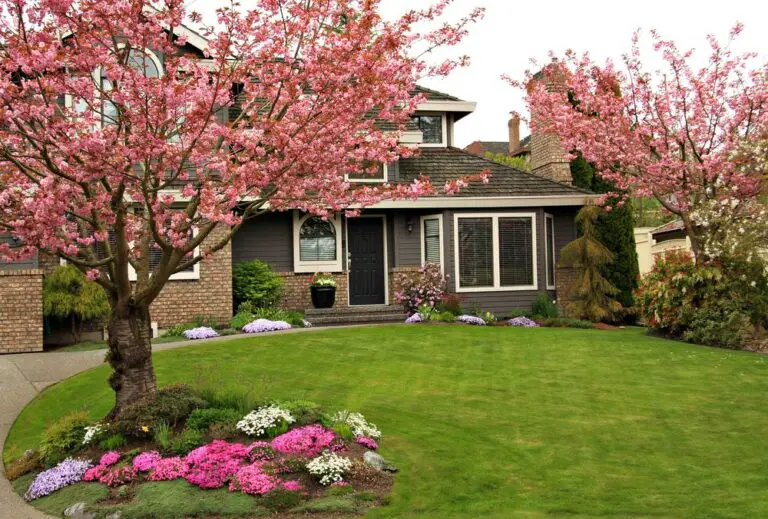Rock Garden Ideas: Transforming Your Garden into a Zen Oasis
Gardening enthusiasts and homeowners often seek innovative ways to beautify their outdoor spaces. One such method that has seen a surge in popularity in recent years is the rock garden. Not only do rock gardens present a visually stunning aspect to any garden, but they also offer practical benefits, such as being low-maintenance and drought-resistant. This article delves deep into some captivating rock garden ideas that can inspire your next gardening project.
Why Opt for a Rock Garden?
Before we dive into the design ideas, it’s essential to understand why rock gardens are a great choice:
Low-Maintenance
Unlike lawns that need regular mowing or flower beds that require daily care, rock gardens are relatively hands-off.
Water-Savvy
They are perfect for regions prone to drought or those who want to conserve water.
Versatility
Rocks, stones, and pebbles can be utilized in various styles, sizes, and colors, creating endless design possibilities.
Innovative Rock Garden Ideas for Your Home
a) Alpine Inspiration
One of the most traditional rock garden designs is the alpine garden. Draw inspiration from rugged mountain terrains by incorporating dwarf conifers, alpine flowers, and a variety of stones. Ensure there’s good drainage to keep alpine plants happy.
b) Zen Tranquility
Inspired by Japanese Zen gardens, use smooth river rocks, pebbles, and sand. You can also add a few larger stones as focal points. Rake the sand or pebbles in circular or wave-like patterns for a calming effect.
c) Succulent Showcase
Succulents and rock gardens are a match made in heaven. These hardy plants require minimal water, making them ideal for rocky settings. Combine different succulent varieties to create a visually rich garden bed.
d) Rocky Water Feature
Introduce a sense of serenity by adding a water feature amidst your rocks. A babbling brook, fountain, or even a simple bird bath can add both auditory and visual appeal.
e) Dry Riverbed
A winding dry riverbed using varying sizes of river rocks can mimic the appearance of a dried-up stream. This is not only a unique visual element but also aids in drainage during rainy seasons.
f) Stepping Stone Path
Using large flat stones, create an inviting path through your garden. Surround these stones with smaller pebbles, moss, or low-growing ground cover plants.
Tips for Creating an Impeccable Rock Garden
Soil Preparation
Ensure your ground has adequate drainage. You might need to incorporate sand or gravel at the base.
Plant Selection
While rocks are the primary element, introducing plants can bring life and color. Opt for drought-resistant species like sedums, succulents, and ornamental grasses.
Rock Placement
This isn’t a random process. Consider the size, shape, and color of each rock. Larger rocks can serve as focal points, while smaller ones can fill in spaces.
Maintenance
While rock gardens are low-maintenance, they’re not no-maintenance. Remove weeds, replenish rocks that get dislodged, and occasionally prune plants to keep the garden looking its best.
The Right Rock for the Right Look
Selecting the right type of rock can make a significant difference in the aesthetic and functional value of your garden:
a) Limestone
Its pale color can brighten spaces and contrasts beautifully with dark green foliage or colorful blooms.
b) River Rocks
Their smooth and rounded appearance is perfect for a natural, tranquil setting.
c) Granite
With its rugged look, granite can provide a more dramatic and bold visual appeal.
d) Slate
Thin, flat pieces of slate can serve as stepping stones or garden edging, offering a neat and organized look.
e) Sandstone
In the enchanting realm of landscaping, where imagination intertwines with nature, behold the transformative touch of sandstone cladding. This porous rock can add a warm hue and is excellent for creating pathways.
Lighting Your Rock Garden
Incorporating lighting can take your rock garden to the next level:
a) Solar Lights
These eco-friendly lights can be easily placed amidst rocks without the hassle of wiring.
b) LED Spotlights
Focus on specific features, like a centerpiece rock or a unique plant, using spotlights.
c) String Lights
Drape them over nearby trees or shrubs for a magical twilight ambiance.
d) In-ground Lights
These can illuminate pathways or the base of larger rocks, adding depth to the space.
Expanding the Ecosystem: Introducing Aquatic Elements
Combining water and rock elements not only increases the aesthetic appeal but also invites a broader ecosystem:
a) Pond with Pebble Shore
A small pond lined with pebbles can attract birds, frogs, and beneficial insects.
b) Waterfall
Use rocks to create a cascading waterfall. The sound of flowing water can provide a calming auditory element.
Personal Touches
Customize your rock garden with elements that resonate with your personality:
a) Garden Art
Introduce sculptures, wind chimes, or birdhouses.
b) Seating
Place a stone bench or a rustic wooden seat, creating a spot to relax and enjoy your garden.
c) Signage
Add small stone plaques or signs with inspirational quotes or plant names.
Conclusion
Incorporating a rock garden idea into your outdoor space can seamlessly blend the rugged beauty of stones with the vibrant hues of rock garden plants. When considering rock garden design, don’t shy away from small rock garden concepts. Even a compact area, accentuated with smooth pebbles, can offer immense visual interest. Incorporate a rock wall for added dimension, using large stones stacked atop one another, interspersed with drought-tolerant plants or native plants that thrive in your region.
Local garden centers are a treasure trove for those seeking inspiration and materials. From flat slabs perfect for crafting a serene walkway to large boulders that can serve as the centerpiece of a flower bed, the options are endless. Furthermore, remember that rock gardens aren’t exclusive to just rocks; interplay different elements to make the space look like a cohesive work of art.
To make the most out of your rock garden, ensure a harmonious balance between the stones and plants. Position larger elements thoughtfully, letting them complement, not overshadow, one another. By combining these diverse elements—whether it’s smooth pebbles, drought-resistant foliage, or eye-catching large boulders—you’re sure to create a space that captivates and soothes in equal measure.



